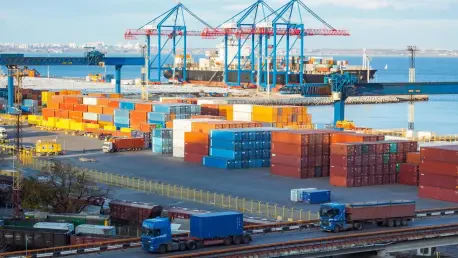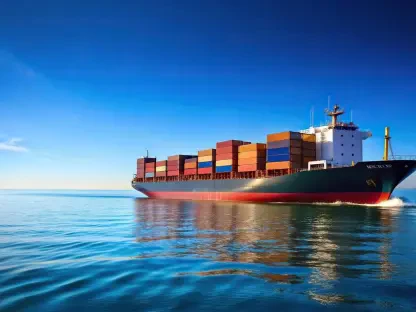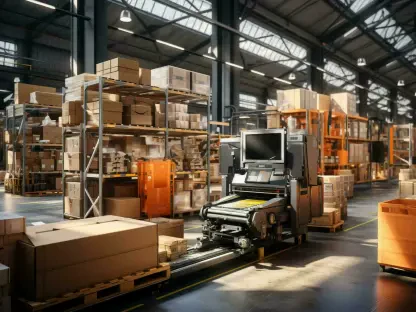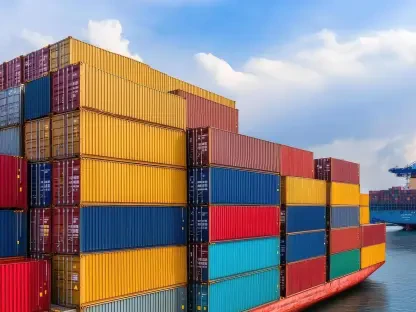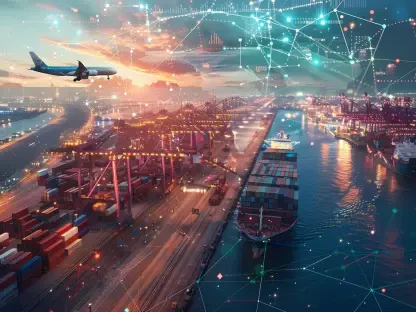I’m thrilled to sit down with Rohit Laila, a seasoned veteran in the logistics industry with decades of experience in supply chain and delivery. Rohit’s passion for technology and innovation has positioned him as a thought leader in the field, and today, we’re diving into the latest developments in maritime shipping and port operations, with a focus on the impressive performance of one of the industry’s major players. Our conversation explores topics like container volume growth, the dynamics of global trade, regional performance differences, and strategic approaches to navigating market challenges.
How would you describe the overall performance of major port operators like Cosco Shipping Ports in the first nine months of this year, and what stands out to you about their reported 5.6% increase in container volume?
Well, the 5.6% year-on-year growth in container volume to over 113 million TEU is a strong indicator of resilience in the industry. What stands out is how this growth reflects a broader recovery in global trade, especially when you consider the headwinds from trade policies and tariffs. Compared to previous years, this uptick suggests that operators are finding ways to capitalize on demand, even in a tricky environment. It’s a testament to strategic planning and network efficiency.
What do you think are the key drivers behind this kind of volume growth for port operators during this period?
I’d say a big driver is the rebound in consumer demand for goods, especially in key markets like China, where export values are climbing. Additionally, operators are leveraging global networks to tap into emerging trade routes. The ability to adapt to shifting market dynamics, like rerouting shipments or optimizing terminal operations, has been crucial. Plus, partnerships and alliances in the shipping world amplify these efforts by ensuring steady cargo flows.
Can you break down the difference between controlling and non-controlling terminal stakes for us, and why might non-controlling terminals show stronger growth, like the 6.7% increase compared to 2% for controlling stakes?
Sure, controlling stakes mean the operator has majority ownership and direct management over a terminal, while non-controlling stakes are minority investments where they have less operational control. The higher growth in non-controlling terminals often comes down to their locations in high-growth regions or markets with less saturation. These terminals might also benefit from local partnerships that drive volume, whereas controlling stakes can sometimes face heavier investment costs or operational bottlenecks that slow growth.
How does the balance between controlling and non-controlling stakes impact the broader business strategy for a port operator?
It’s all about risk and reward. Having a larger share of non-controlling stakes, like the 77.9% reported, allows for diversified revenue streams without the full burden of operational costs or capital investment. Strategically, it spreads risk across different markets. On the flip side, controlling stakes offer more influence over efficiency and long-term planning. The balance shapes how much flexibility an operator has to pivot in response to market shifts while maintaining a stable income base.
Looking at regional performance, what do you think contributed to the 3.1% growth in throughput at terminals in China over the last three months of this period?
China’s growth, even at 3.1%, is significant given its massive share of global trade. It’s likely driven by steady domestic production and export activity, as seen in the 4% rise in goods value reported by customs data. Government policies supporting trade, coupled with robust manufacturing sectors, keep the terminals busy. Also, China’s role as a hub for transshipment to other Asian markets helps sustain this throughput.
How does that growth in China stack up against the much stronger 7.6% increase at overseas terminals during the same timeframe?
The 7.6% growth overseas highlights how international markets are catching up or even outpacing China in certain areas. Overseas terminals often benefit from rising demand in regions like Europe or Southeast Asia, where trade routes are expanding. Unlike China, where growth is more steady due to its scale, overseas locations might be seeing sharper increases from a lower base, or from new investments and infrastructure upgrades that boost capacity.
Despite global trade challenges like tariffs and unilateral policies, port operators have shown resilience. What strategies do you think are most effective in navigating these uncertainties?
Resilience comes from adaptability. Operators are diversifying their market exposure by expanding networks into less volatile regions. They’re also investing in technology to improve efficiency—think automated terminals or real-time data for better decision-making. Strong alliances with shipping lines and dual-brand strategies create a buffer by ensuring consistent cargo volumes, even when policies disrupt certain trade lanes.
China’s customs data showed a 4% increase in the value of goods traded. How do you see this trend influencing port operations and container volumes?
This uptick directly fuels container volumes because higher trade value often means more goods moving through ports. It signals stronger demand for shipping capacity, which pushes operators to optimize turnaround times and expand services. It also influences the mix of cargo—higher-value goods might require specialized handling or faster transit, prompting adjustments in operations to meet those needs.
Port operators often talk about seizing market opportunities through global networks. Can you paint a picture of what that looks like in day-to-day operations?
Absolutely. It means having terminals strategically placed in key trade corridors to capture cargo flows, like positioning in Southeast Asia for intra-Asian trade. On a daily basis, it’s about coordinating with shipping lines to reroute vessels based on demand spikes, or offering value-added services like warehousing at key hubs. It’s also about using data to predict trends and shift resources—say, moving equipment to a port expecting a surge in volume.
Looking ahead, what is your forecast for global trade and port operations in the coming years, especially with mixed projections like the WTO’s revised growth estimates?
I’m cautiously optimistic. The WTO’s upward revision to 2.4% growth for 2025 is encouraging, but the dip to 0.5% for 2026 signals potential turbulence. Port operators will need to brace for volatility by doubling down on flexibility—think agile supply chains and tech investments. Growth will likely come from emerging markets, but only if geopolitical tensions don’t derail trade. The focus should be on building resilient networks that can weather these ups and downs.
